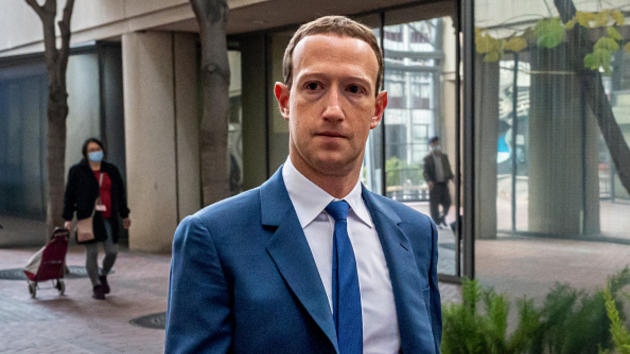Why recession fears are growing and what a downturn could look like
Written by ABC Audio ALL RIGHTS RESERVED on December 27, 2022
(NEW YORK) — Recession fears are growing, even as households strained by inflation begin to find some relief.
The dynamic captures the confusing state of the U.S. economy, as the Federal Reserve aggressively fights inflation with interest rate hikes that aim to slash prices by slowing demand and risking a recession. In fixing one problem, the central bank may create another.
Economists surveyed by Bloomberg on Tuesday placed the chances of a recession in 2023 at 70%, marking a 10-percentage-point increase from October. The projections arrived days after the latest rate hike from the Fed, which sent the stock market tumbling.
Persistent inflation has prompted the Fed to sustain ongoing rate hikes and imperil the economy, rather than risk deeply entrenched price increases that could prove more difficult to reverse, some experts told ABC News. In turn, the longer the Fed takes an aggressive posture, the more likely that the economy will fall into a recession, they said.
But a potential recession would likely be mild, they added, especially when compared to the pandemic-induced downturn two years ago and the Great Recession, which for many Americans make up their go-to points of reference. Still, for those put out of work by a downturn, the effects would be severe.
Here’s what to know about why recession fears are rising and what a potential recession would look like:
Why recession fears are rising
At the center of the nation’s economic problems is its ongoing bout of near-historic inflation, economists told ABC News.
A government report last week revealed that inflation stood at 7.1% in November compared with a year prior, continuing a months-long decline from a 40-year record reached over the summer. However, inflation remains at a level more than triple the Fed’s target rate of 2%.
In response, the Fed has continued a series of interest rate hikes. The Fed last week raised its benchmark interest rate 0.5%, slowing down from a set of jumbo-sized hikes in recent months, but projecting a policy of rising rates that won’t reverse until 2024.
The ongoing rate hikes will clog the borrowing and spending that makes up the lifeblood of the economy, likely causing job losses, Christian Lundblad, a professor of finance at the University of North Carolina at Chapel Hill’s Kenan-Flagler Business School, told ABC News.
“The Fed is probably going to have to keep interest rates elevated for longer,” Lundblad said. “That makes it more difficult for households to borrow for a car or a mortgage, and makes it more difficult for firms to borrow to take on new projects.”
“There’s a pretty good consensus among economists, market participants and others, that the Fed is going to keep interest rates elevated in order to slow down the inflation pressures we’re seeing and that it will have no choice but to create a recession,” he added.
For its part, the Fed acknowledges that rate hikes will cause job losses but says it’s trying to avert a recession. Such a policy outcome is known as a “soft landing,” in which the Fed slows the economy and brings down inflation, while preventing the U.S. from entering a recession.
Jerome Powell, the chair of the Federal Reserve, said last week that the prospects for a soft landing remain unclear.
“I don’t think anyone knows whether we’re going to have a recession or not, and if we do, whether it’s going to be a deep one or not,” Powell said. “It’s not knowable.”
However, some economists think the U.S. will likely avert a recession altogether.
Recession fears “are not particularly warranted,” Laurence Kotlikoff, an economist at Boston University, told ABC News.
He attributed sky-high prices to supply chain disruptions, such as pandemic-induced bottlenecks and the Russia-Ukraine war, which he said will ultimately alleviate. In turn, global supply will come back into balance with demand and bring down prices, easing the task presented before the Fed, he added.
What a recession could look like
A recession in the coming months would likely be mild, especially compared with recent downturns that have sent the unemployment rate above 10%, some economists told ABC News.
Lundblad, of the University of North Carolina at Chapel Hill, said a recession could take hold as soon as early next year, disrupting the post-COVID recovery while averting a deep pull back.
“The run-of-the-mill recession in U.S. history is very different from the last couple we’ve experienced, whether the Great Recession or COVID,” Lundblad said.
“It’s not going to be a massive financial crisis but it will be different from the growth we’ve seen for the last couple years digging out of COVID,” he added.
Since World War II, recessions have lasted an average of about 11 months, personal finance outlet Kiplinger found. Far exceeding that norm, the Great Recession lasted 18 months, which Lundblad called “incredibly unusual.”
Still, millions of Americans could be put out of work. Job losses forecasted by the Fed in September would raise the unemployment rate from its current level of 3.7% to 4.4% by the end of 2023. That outcome would add an estimated 1.2 million unemployed people, according to Omair Sharif, the founder of research firm Inflation Insights.
Those job losses will disproportionately fall on some of the most vulnerable workers, including minorities and less-educated employees, according to economists and studies of past downturns.
People are justifiably nervous about the murky outlook for the economy, Kathryn Anne Edwards, an adjunct labor economist at the RAND Corporation, told ABC News.
“It’s a very unique time right now for our economy and it’s not as predictable as it has been in the past,” she said. “We’re coming out of an every-hundred-year event of the pandemic and we backed into a once-every-40 year event of inflation.”
“It’s unsettling,” she added.
Copyright © 2022, ABC Audio. All rights reserved.





